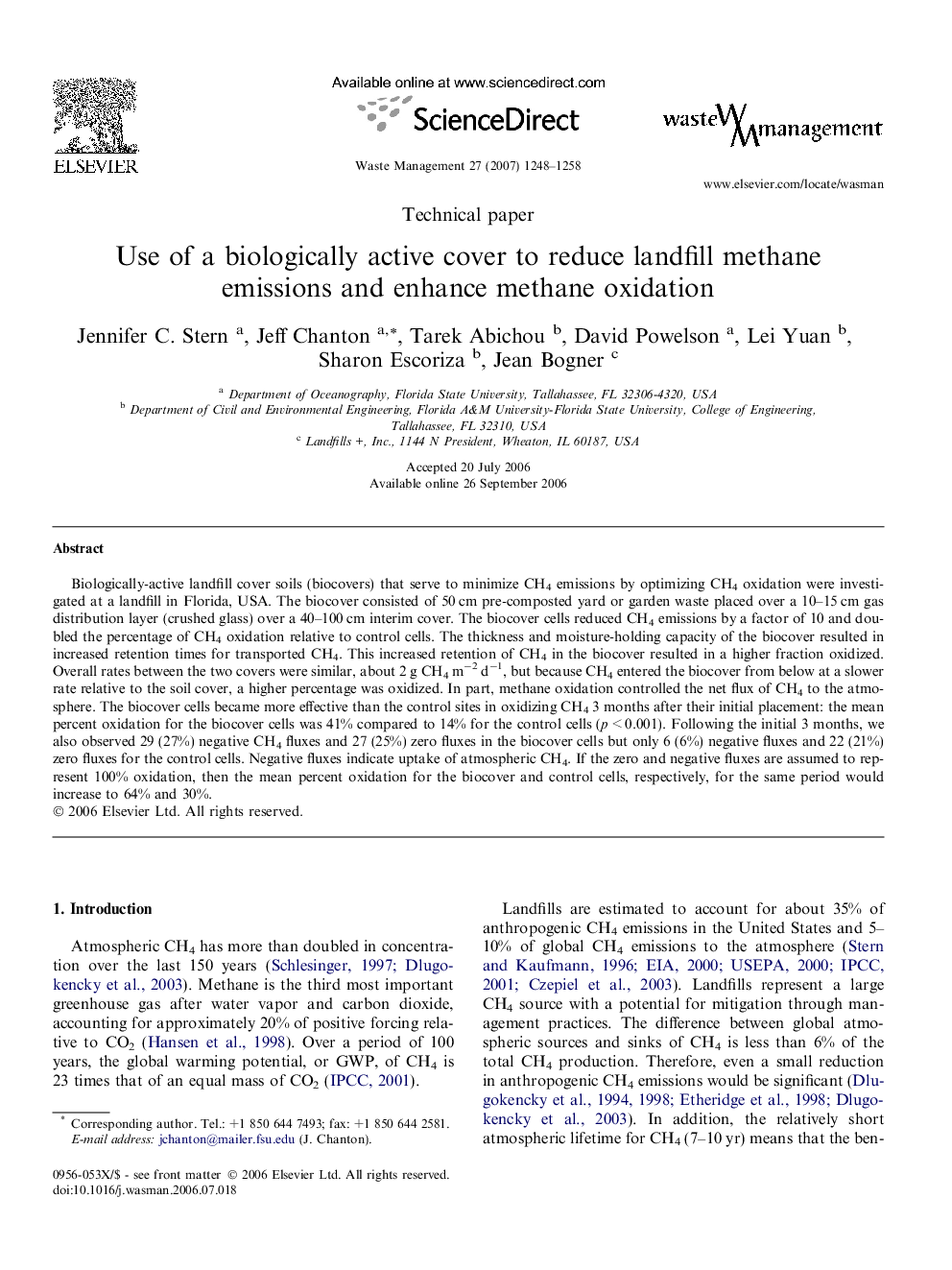| Article ID | Journal | Published Year | Pages | File Type |
|---|---|---|---|---|
| 4474119 | Waste Management | 2007 | 11 Pages |
Biologically-active landfill cover soils (biocovers) that serve to minimize CH4 emissions by optimizing CH4 oxidation were investigated at a landfill in Florida, USA. The biocover consisted of 50 cm pre-composted yard or garden waste placed over a 10–15 cm gas distribution layer (crushed glass) over a 40–100 cm interim cover. The biocover cells reduced CH4 emissions by a factor of 10 and doubled the percentage of CH4 oxidation relative to control cells. The thickness and moisture-holding capacity of the biocover resulted in increased retention times for transported CH4. This increased retention of CH4 in the biocover resulted in a higher fraction oxidized. Overall rates between the two covers were similar, about 2 g CH4 m−2 d−1, but because CH4 entered the biocover from below at a slower rate relative to the soil cover, a higher percentage was oxidized. In part, methane oxidation controlled the net flux of CH4 to the atmosphere. The biocover cells became more effective than the control sites in oxidizing CH4 3 months after their initial placement: the mean percent oxidation for the biocover cells was 41% compared to 14% for the control cells (p < 0.001). Following the initial 3 months, we also observed 29 (27%) negative CH4 fluxes and 27 (25%) zero fluxes in the biocover cells but only 6 (6%) negative fluxes and 22 (21%) zero fluxes for the control cells. Negative fluxes indicate uptake of atmospheric CH4. If the zero and negative fluxes are assumed to represent 100% oxidation, then the mean percent oxidation for the biocover and control cells, respectively, for the same period would increase to 64% and 30%.
